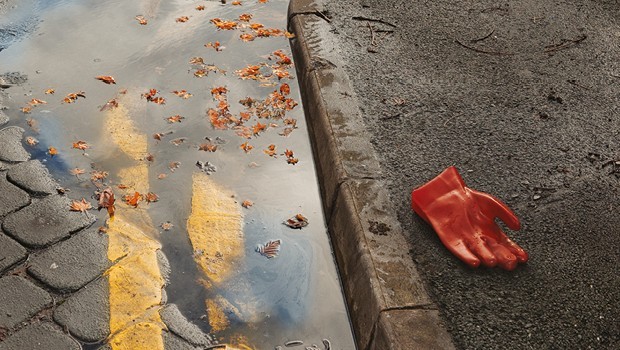The reality of premiering a quartet of performances is the need to be creating, developing and rehearsing four pieces of work simultaneously. This is the case with Summer. Autumn. Winter. Spring., with the week divided between planning meetings, core team rehearsals, evening and weekend rehearsals with the performers for Summer. and Spring., and on-going conversations about how it all might come together as one large-scale, day-long event.
Fridays are generally spent developing ideas for Autumn., which in the context of the quartet acts as a kind of interval: a transition between Summer. and Winter., in which the audience are invited from their seats and into the performance space to take part in a curated event. Of course, all theatre relies on an audience to some extent, but in Autumn. the audience help create the content, meaning the work is almost entirely empty without their presence. Until it is performed live, Autumn. exists mainly as a map and a series of possible encounters:
A long wooden table.
A space that might be for food preparation.
A space that might be for discussion.
A round table surrounded by 15 chairs.
A small table with a single chair either side.
A space that might be for conversations about the future.
A space that might be for a game that begins with the past.
A semi circle of chairs around a screen.
A small table. No chairs.
A space that might be used to discover who else is in the room.
Spaces that might be for writing, for dancing, for table tennis.
Spaces for watching.
The map is continually changing and developing as ideas are tested and new ones formed. In rehearsals, the creative team set up possible configurations of the space and try to imagine it populated with over 200 people. There are lots of conversations about hosting and what the qualities of a good host are. We talk about the best parties we have been to (and the worst); the kinds of hosts that check in and make you feel at home, and the kinds of hosts that make you feel constantly terrified you’ll spill red wine on their soft furnishings. We talk about restaurants with incredible service, where the staff are attentive but not overbearing. We discover a shared affection for the maître d’ from First Dates. We talk about the places where we feel most comfortable. A great deal of consideration is given to creating a space where the audience might feel welcomed and cared for, but also free to explore and map out their own journey through the event.
Essential to Autumn. is that it provides a kind of pause – an opportunity to position oneself somewhere in the confusion between past, present and future. From observing rehearsals, it feels like in reality the event could be many different things: an invitation to give something of ourselves; an occasion to be present with the other people in the room; a chance to consider the changing shape of the world; an opportunity to watch as it all unfolds; a place to make some kind of statement; a space for a break, or to share food, or to have some thinking time – alone or in dialogue with others. It will probably also be a whole host of other things that haven’t yet been imagined. What is certain is that it will be different each time, influenced by the people in the room and how they choose to get involved.
– Sarah Hunter
